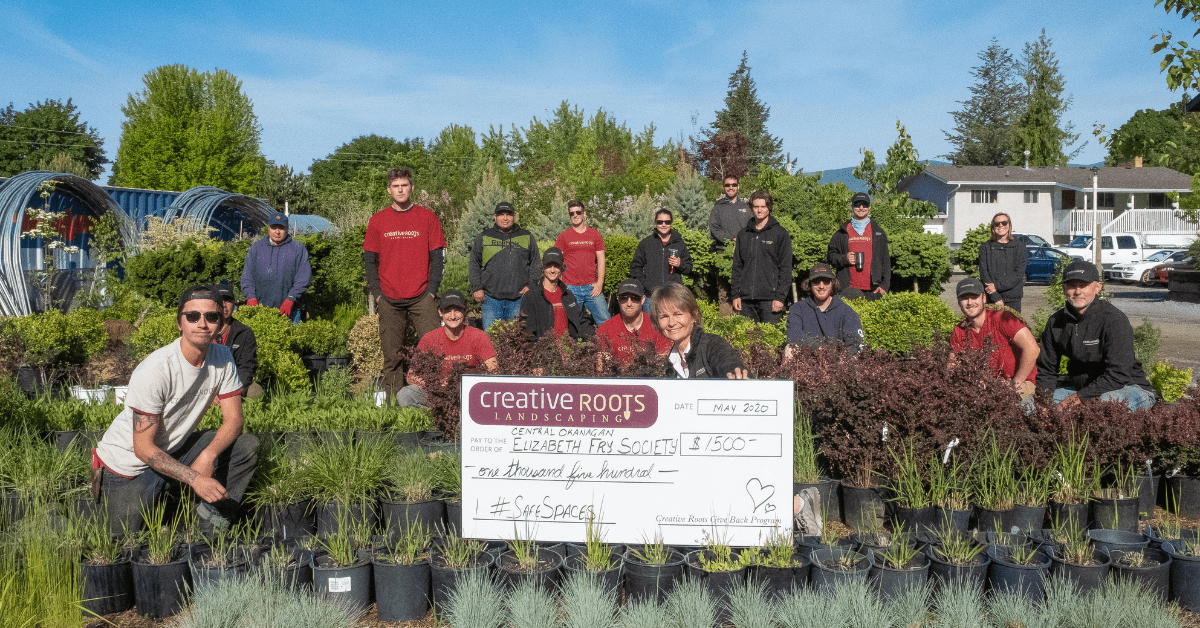
Even though the months of November and December bring thankfulness and giving to the forefront of people’s minds, these landscape companies opt to give back to their communities year-round.
Peter Novak, president of Serpico Landscaping, based in Hayward, California, says they have grown their company in the San Francisco Bay area for 32 plus years and their deep gratitude for all the good things they have experienced is why they give back to the communities they serve.
“For Serpico, it’s not all about the money,” Novak says. “When we give back to a community that supports us, we create a long-lasting relationship with the people in our area who we love and care about. We’re always looking for new ways to support our local communities.”
Similarly, Jeff Rossen, CEO of Rossen Landscape, based in Great Falls, Virginia, says they want to serve their communities because it’s their client base.
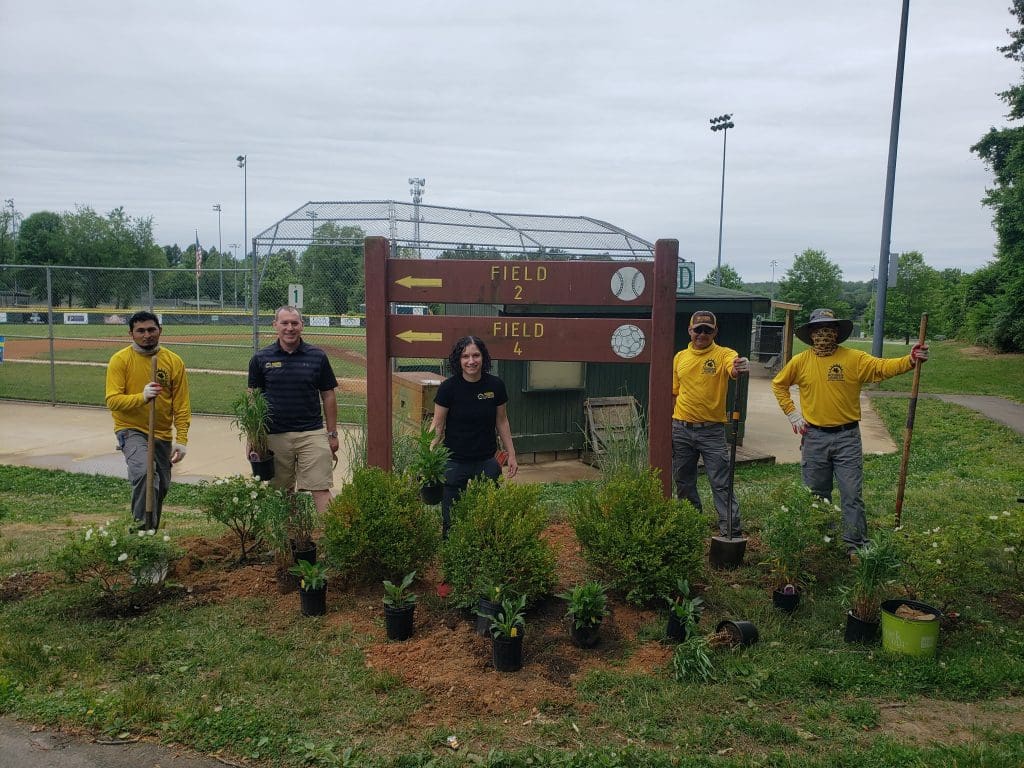
“It’s just good business,” Rossen says. “It’s not necessary, but it’s necessary to us because we’re passionate about it. We’re a small local business. We want to take care of who takes care of us.”
Seneca Hull, LIC, president of Franz Witte, based in Boise, Idaho, says one of their values is relationships and by helping their community they help to make the place they live and work in better and give back to everyone who supports them.
“Our employees live and work in our communities and it is important to give back and create those relationships so that we can be there to help shape our communities into better places to live,” Hull says. “As Franz always says, ‘The world is run by the people who show up!’”
For The Klausing Group, Inc., based in Lexington, Kentucky, they choose to give back because they practice conscious capitalism.
“This approach to business elevates the status of customers, employees, vendors, communities, and the environment to that of a major stakeholder, the same way most businesses think about shareholders,” says Roscoe Klausing, LIC, CEO of The Klausing Group. “When we acknowledge that the success of our business is inextricably linked to the success of our community, it becomes an easy decision to create a formal giveback program.”
Ryan Markewich, owner of Creative Roots Landscaping, based in British Columbia, Canada, jokes that he gives back for selfish reasons – it makes him feel good.
“I feel fortunate to have such a great opportunity, and deep down, I know that building relationships in this way helps me as much as it does those who have not had such good fortune,” Markewich says.
Ways to Give Back
There are numerous ways to give back to the local community and each company has found a unique way of doing so.
The Klausing Group modeled their giveback program, 10% for the Community, after Patagonia’s 1% for the Planet program. Since 2000, they’ve donated hundreds of thousands of dollars worth of landscape services. With this program, Klausing Group donates grounds maintenance service contracts to local non-profits.
“We look for organizations that have a favorable administrative expense ratio so that our contribution can be leveraged,” Klausing says. “For example, if a food pantry provides food valued at three times their overhead expense, our contribution of landscape services creates an opportunity for the pantry to provide three times the value of that expense in the form of food to the community.”
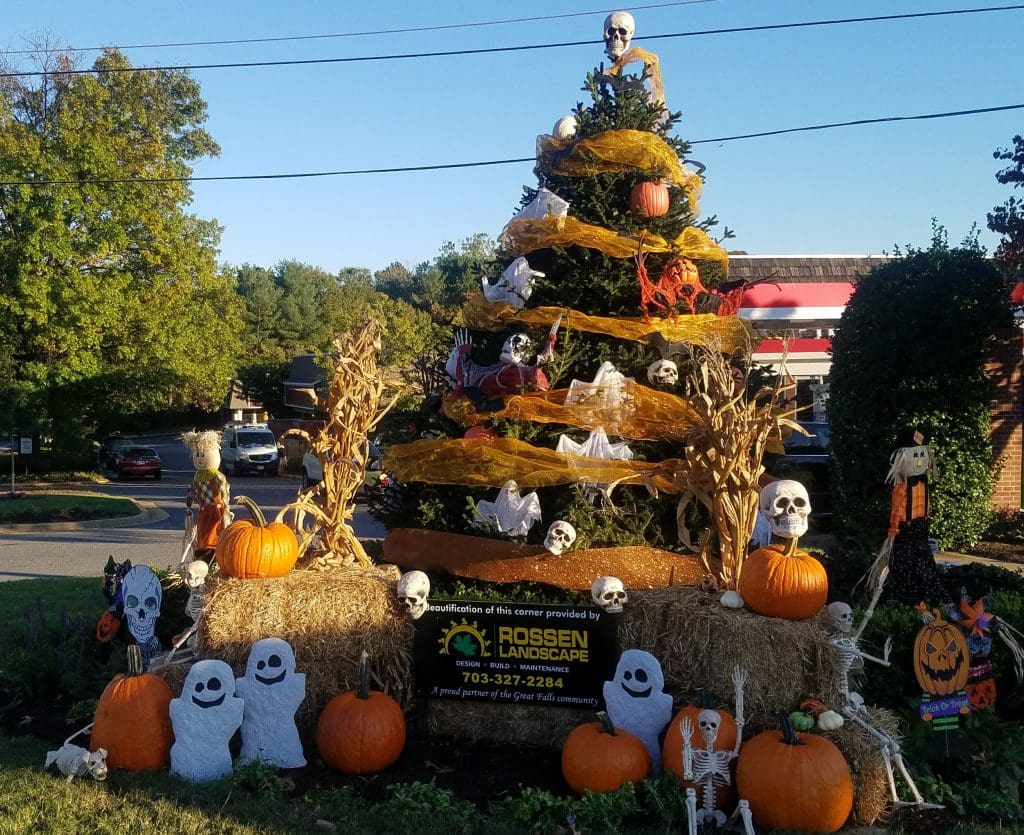
Photo: Rossen Landscape
These accounts are managed just like their paying clients. The beneficiaries have a contract, a scope and spec, and an account manager assigned to serve them but, there’s no fee for the service.
At Rossen Landscape, they sponsor the Great Falls Foundation, which puts on a number of community events such as a Halloween Spooktacular and fireworks for the Fourth of July.
“We just like to be present for whatever we can, whether it’s a parade or a festival or supporting the elementary schools or the Little League or all the various sports clubs, just to get our name out there,” Rossen says. “It’s less about advertising and more about brand recognition.”
Rossen says they will donate to any group that approaches them that operates within their target market. He says while they set a budget for their yearly contributions, they typically exceed it.
They also have offered their services by installing a sustainable garden at the local elementary school and decorating the ‘communi-tree’ for various holidays. The company also makes cotton candy, popcorn and snow cones for various community events throughout the year.
“We have all these concession machines so that when these community events come up, we can go out there and we’re ready to rock,” Rossen says. “We don’t have to rent anything. I just like being out there and interacting.”
Creative Roots’ GiveBack program is an extension of their open-book management system.
“It starts with our company-wide, weekly meetings to discuss the company’s finances, ways to succeed as a team, and the impact that success will have on the bottom line,” Markewich says. “Each employee donates an hour of their wages for these meetings to the GiveBack program, which is how giving back to our community happens! Since the inception of the GiveBack program, we have invested more than $125,000 back into our local community.”
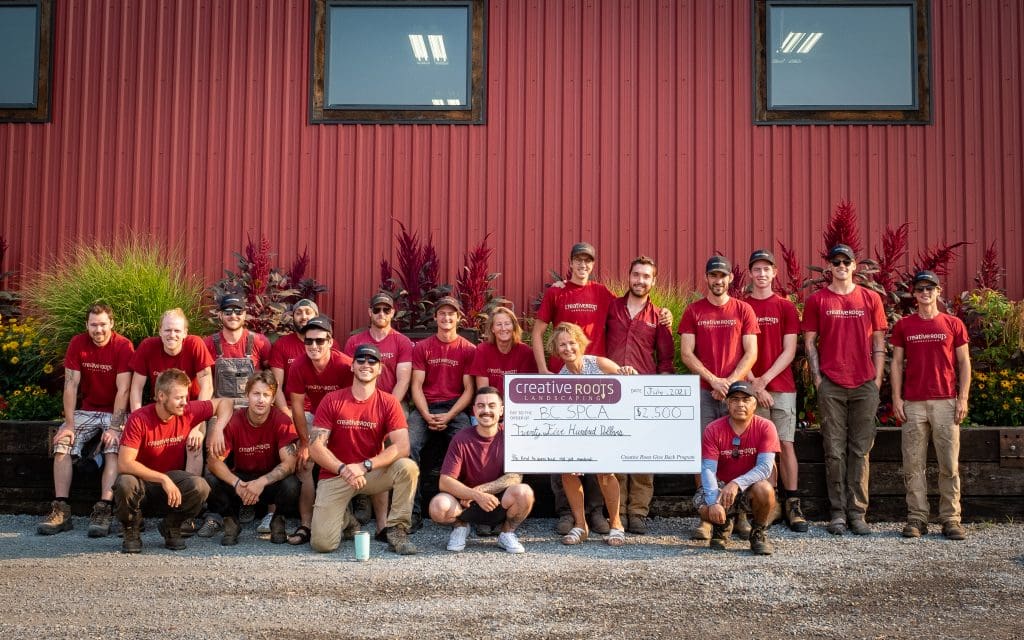
With their GiveBack program, they annually donate $1,000 each to local charities in June and December. They donate $1,000 for the “Creative Roots Landscaping Growing Opportunities Bursary” through the Central Okanagan Bursary and Scholarship Society for a local graduating student. They also donate $100 quarterly to their local Kelowna chapter that is given to a variety of local charities.
Creative Roots also has their Yard Angels program where they donate landscape maintenance services to three deserving residents. They aim to lighten the load of a resident suffering from a debilitating illness or injury who cannot care for their yards. People are encouraged to nominate others who would appreciate and need the service.
“Creative Roots Yard Angels descend upon and complete a yard maintenance miracle at the recipient’s home on the third Saturday in April, August, and November,” Markewich says. “We hope our gesture will bring joy and ease the burden and promote the healing of someone in need.”
Franz Witte has planted trees and created community gardens at numerous schools over the years. They were also involved in the beginning of the Idaho Botanical Gardens and have supported them ever since.
Serpico chooses to give back to local non-profit organizations that are geared toward ending hunger, helping local youth and families thrive and protecting the local bay environment and watershed.
“We seek to develop relationships with organizations whose causes we care deeply about, therefore we meet with them and get to know how they operate,” Novak says. “This helps us to partner with them and have a living conversation about the best way to help. In many cases, this is direct pro-bono services and in others, it is monetary based.”
Favorite Methods of Giving Back
Klausing, Rossen, Hull and Novak all prefer to give back via service projects as it allows them to interact with those in their community.
“We prefer to do service projects, for sure,” Rossen says. “The impact is displayed. When you just give the money, you give the money and it’s gone and you don’t necessarily know exactly where it’s going but when we do a service project we’re there, we’re taking pictures, we’re involved, we’re interacting. We want to interact as much as possible.”
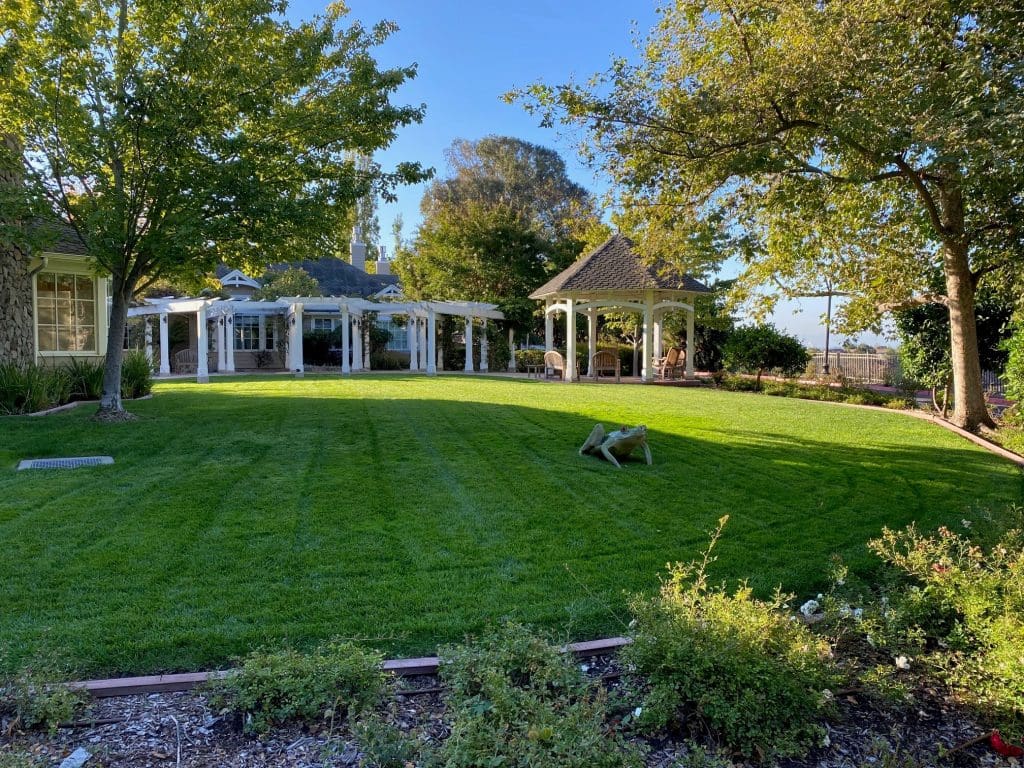
Photo: Serpico Landscaping
Novak’s favorite way to give back is with the George Mark Children’s House, a palliative care facility designed specifically for children and their families. Serpico’s founder saw a news story about the place in 2008 and after meeting with the George Mark team they discovered the best way to help is through donating landscaping services.
“Serpico Landscaping has been providing weekly lawn, landscaping, trees and irrigation care to George Mark Children’s House continuously since that day,” Novak says.
Hull’s favorite community event is OktoberBreast, which they host annually to raise money for breast cancer research and recovery. This was their 11th year to host OktoberBreast and their goal was to raise $50,000 to share between Casting for Recovery and Expedition Inspiration.
“Casting for Recovery takes women on a fly-fishing retreat in Challis, Idaho, and teaches them to cast, tie flies and even catch with the help of professional guides that donate their time,” Hull says. “It is amazing to see these women with all stages of breast cancer get together and be able to focus on something else, yet have the support of others going through the same things. One of our partners’ wives had gone on the retreat and suggested it to us and it has been such a great organization to help.”
Expedition Inspiration’s focus is on research to treat and prevent breast cancer and they have had some breakthroughs in their research. Their main way of raising funds is through mountain climbing which ties in with the outdoors.
Markewich says he doesn’t have a personal favorite but he says from conversations with his team he knows they enjoy the in-kind work through Yard Angels or helping out at the local food bank the most.
Benefits of Giving Back
Many of the benefits of giving back to the community are intangible or hard to track directly to charitable actions. However, it can help influence both potential new hires’ and customers’ decisions to work with you.
“By itself, a giveback program does not attract talent,” Klausing says. “But when combined with other approaches like operating with a clear and meaningful purpose and a focus on stakeholder inclusion and equity, these programs influence the right candidates and sway them towards Klausing Group.”
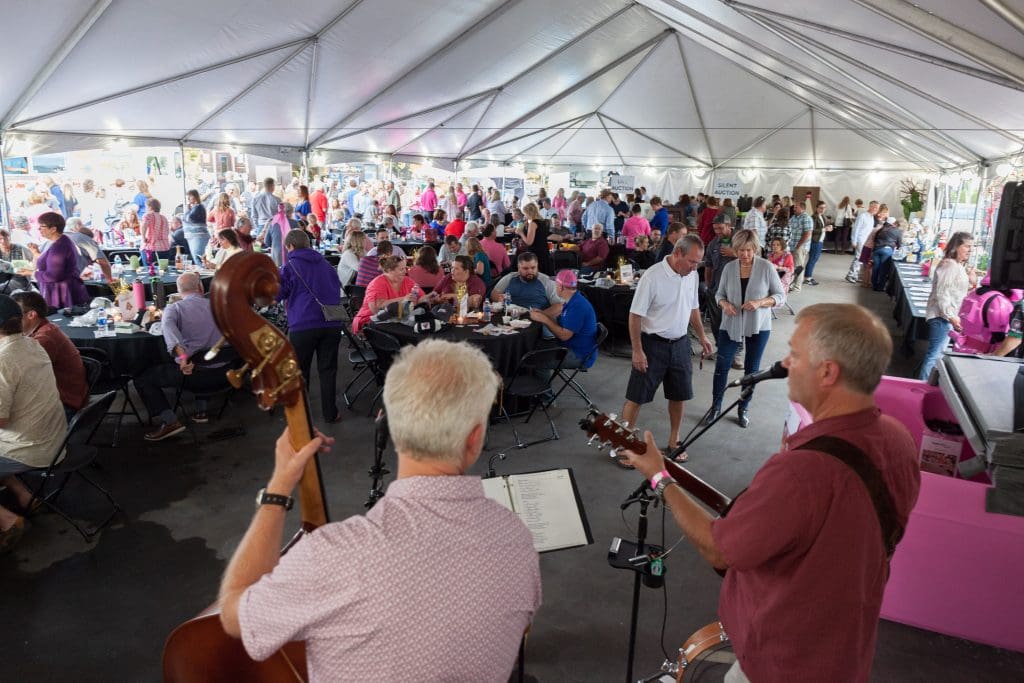
Photo: Franz Witte
Novak says their charitable work does have an impact on many candidates’ decision to pursue a career with them. Similarly, Markewich says when potential hires learn more about them and how they’re trying to improve people’s lives they feel a connection to their initiative.
Hull believes their community work does attract people, especially younger generations.
“They want to not just have a job,” she says. “They want to work somewhere that they feel they can make a difference not only in their lives but in others.”
Rossen says while he isn’t sure if their community work has helped attract new employees, he knows it does help retain their current ones as they build culture when they come together to serve at community events.
As for increased business, Rossen says their presence in the community has definitely resulted in more work.
“Clients want to buy from someone whose purpose and approach they respect,” Klausing says. “They won’t pay a premium for your giveback program, but it is a differentiator.”
Novak says they could promote their community work more on social media, but it is not why they volunteer and donate.
“If a prospective client learns about us and feels we are a good match, this may likely be one component of why they feel that way, but it isn’t always,” Novak says. “Regardless, our focus is on service… be it landscaping or community service.”
Likewise, Creative Roots has occasionally received leads from their GiveBack program, but it’s not something they try to leverage.
“We subscribe to the notion that you get what you give in life, and if that comes back to us in time or is simply paid forward to someone else, it makes no difference to us,” Markewich says. “We give, we have fun doing so, and we believe that somehow that has helped our success in business and as human beings.”
Hull agrees that additional business is not the ultimate goal of giving back.
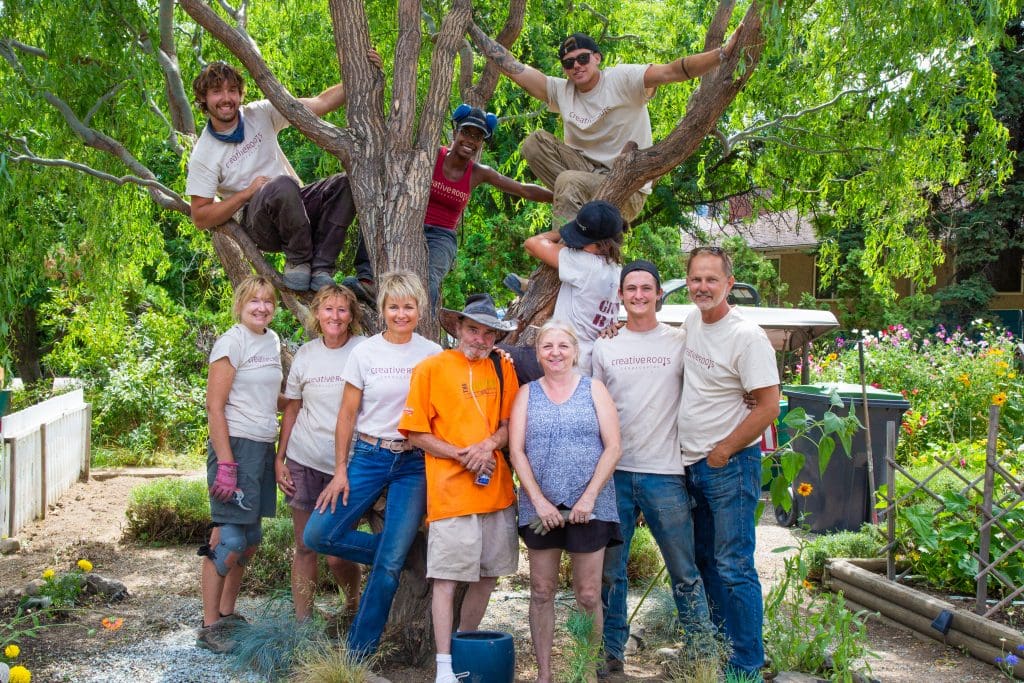
Markewich says in his opinion all companies should be at some level involved in their communities.
“In today’s world, with all the ways for us to communicate on a more global level, often there is not enough time to consider what is happening in the community around you,” Markewich says. “Giving back doesn’t have to cost a lot of money. The simple act of helping someone in need to do something as simple as cut their lawn goes a long way in building a better, stronger community.”
“I have heard from people that they have shopped with us or had us build their landscape because of something we have done, which I see as a bonus!” Hull says. “We believe in the value we bring to the community not only by the work we do, but in the jobs we create and the lives that we help grow. We don’t just grow plants or landscapes, we grow people!”
This article was published in the November/December issue of the magazine. To read more stories from The Landscape Professional magazine, click here to subscribe to the digital edition.

